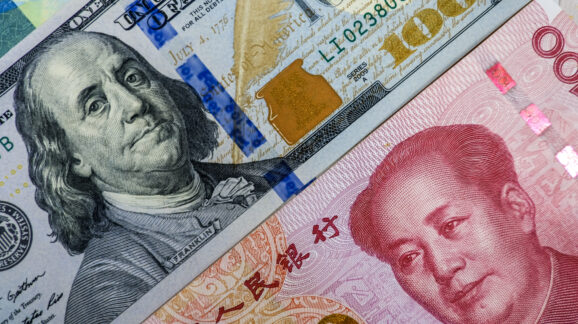Biden clings to Trump’s trade policy, preventing the US from overtaking China
The U.S. has retreated from global trade leadership. China has taken its place as the foremost player in international trade.
As the top trading partner of more than 120 countries, China has solidified its central role in global trade in the years since the introduction of Trump-era tariffs. Not only have these tariffs failed to dent Chinese trade dominance, but they hurt the American economy by raising prices, disrupting supply chains, and inviting retaliation. The U.S. needs better trade policies to compete and succeed globally.
One enormous opportunity to restore America as the world’s biggest trade partner is to secure a deal with other Asian nations, especially in Southeast Asia, a combined emerging market projected to be the fourth-largest economy in the world by 2030.
So far, the Biden administration has failed to make progress on that effort. By sidelining for domestic reasons traditional trade issues such as market access, tariff reduction and market liberalization, the Biden administration’s stalled trade pillar in the Indo-Pacific Economic Framework for Prosperity has real limitations. This has frustrated key partners in Asia.
Launched in 2022 under the White House’s Indo-Pacific Strategy, the Indo-Pacific Economic Framework for Prosperity fails to offer a broad economic plan. The framework cannot even be called a free trade agreement; instead, its four pillars are modeled after former President Trump’s restrictive U.S.-Mexico-Canada Agreement, which U.S. Trade Representative Ambassador Katherine Tai views as the blueprint for modern trade deals.
More than a year after its launch, an annual survey by the Institute of Southeast Asian Studies reveals declining optimism about the framework among Southeast Asians, with positive sentiments dropping and uncertainties rising. Asians are concerned about the framework’s effectiveness and its failure to provide market access. The survey also highlights the frustration with the added compliance costs, necessary to adhere to the restrictive regulations, standards and agreements set forth within the framework, coupled with a lack of tangible economic benefits.
Meanwhile, the Biden administration’s use of export controls and tariffs are supposed to target China for its unfair trade practices, but these measures impact Southeast Asia, such as in its production of bifacial solar panels. Because these economies depend on Chinese industrial exports, U.S. restrictions on Chinese products force Southeast Asian manufacturers to either find new markets outside the U.S. or look for sources other than China. This forced shift could lead to raised manufacturing costs, higher prices and, ironically, a slower transition to renewable energy, something the Biden administration purports to want quickly for these countries to transition.
The U.S.’s aggressive tariff actions push Southeast Asian nations to bolster regional agreements like the Regional Comprehensive Economic Partnership, which includes China as a member. This not only explains the region’s trade preference toward China but also Beijing’s influence over trade rules and economic policies in Asia.
So, although change is unlikely, it is needed.
The U.S. has free trade agreements with only 20 countries, which means American exporters often face tariffs in key markets, unlike their counterparts from countries with more extensive trade agreements. Without proactive U.S. leadership in the World Trade Organization or other forums aimed at trade liberalization, it is unclear how American businesses will secure improved access to Asia’s rapidly growing markets. The lack of a clear strategy and commitment to expanding trade agreements leaves U.S. exporters at a disadvantage, particularly as countries like China continue to strengthen their trade ties in the region.
American farmers and importers have been hit hard by retaliatory measures from Chinese importers. U.S. importers “bore nearly the full cost of these tariffs,” according to a 2023 study by the U.S. International Trade Commission. Trade economist Douglas Irwin notes, “protection is not desirable on economic grounds unless there are sound reasons for ruling out more direct and less costly alternative policies.” By abandoning traditional trade issues and free trade agreements, the U.S. risks greater harm from protectionism than from foreign imports. This could damage American competitiveness and exacerbate economic inequalities at home, with trade barriers proving much harder to dismantle than to impose.
Read the full article at The Hill.
